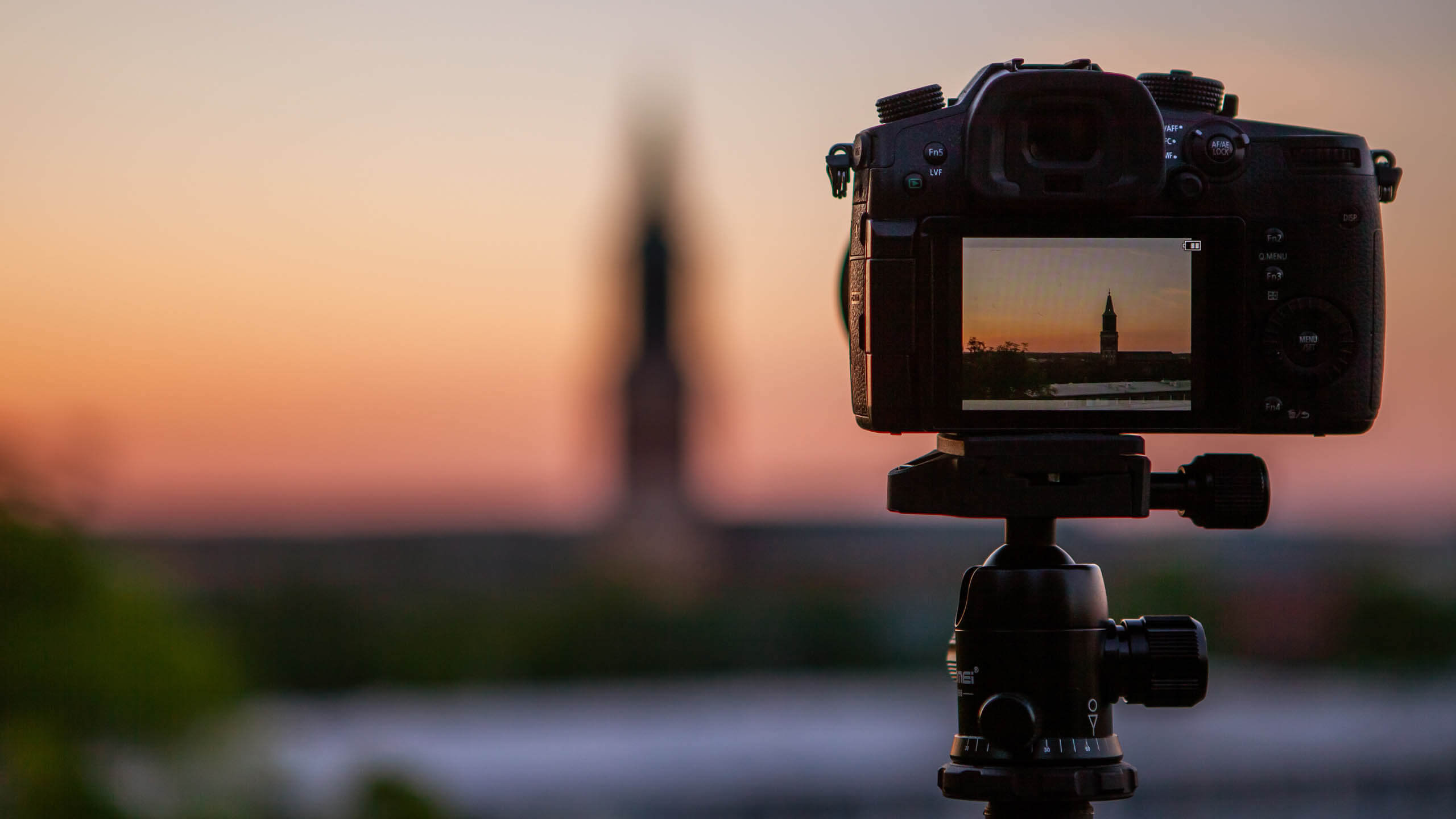Here are several easy tips so you can use your tripod like a pro. You’ll get the most from your tripod this way.
But first … get a quality tripod
Pros use quality tripods. They know better.
If you are bothering to set them up on a tripod, you clearly want clear photos. You also want your tripod to not vibrate. You want stability. And you want it to set up smoothly and easily.
For these reasons and more, it’s worth it to get a good tripod.

It makes little sense to want all these things and then look for a cheap tripod. Besides, your camera and lens are likely worth a lot to you. I love my gear, and don’t want to perch thousands of dollars worth of gear on a flimsy tripod. I’ve had the same good quality tripods since 2013. However, I’ve changed my lens and cameras several times since then. Try to buy a tripod once.
Now that we’ve gotten that out of the way, let’s discuss how to use a tripod like a pro.
Creating the most solid base possible
Lock down your tripod tightly. Check it twice. Do the same for your ball head.
Then push your tripod down into the ground a little. This does two things. First, it pushes it into the sand, dirt, or ground so it won’t settle later. Second, it further verifies that your tripod is locked solidly.
Go wide
Spread the tripod legs out a little wider. You don’t have to go nuts with this. But remember, you’re creating a pyramid. And a fat pyramid is more stable than a skinny one.
Stay low

Don’t deploy your tripod higher than you need it to be. Generally speaking, the lower to the ground it is, the less likely it is to topple. Keeping it lower also reduces the potential for vibration from wind, rumbling trucks, footsteps or anything else.
Say no to center columns
Whenever possible, try not to raise your tripod’s center column. This immediately reduces stability and increases the chances of vibration. Not good, right? It’s better to fully extend your tripod’s legs than it is to deploy your center column. None of the tripods that I use in the field have center columns for this reason.
Use an L-bracket for portraits
If you wish to photograph in portrait mode, use an L-bracket. You can purchase one specially made for your camera. Why? Because this keeps your camera in the center of your tripod pyramid.
Flopping it to the side introduces imbalance and introduces more instability. This is especially true for those of you who have a heavy camera or lens. As a bonus, using an L-bracket is often quicker than flopping your camera to the side and then attempting to level the camera.

Maximizing stability using your center hook
Your tripod may have a center hook. You may weigh the tripod down more by attaching a sandbag or camera bag. The best way to do this is by having the weighted item resting on the ground. You would then attach this to the center hook using a bungee cord, rope or tie-line.
This is considerably more stable than hanging an item directly from the hook. I’ve actually found that during strong winds, it’s actually worse to have something hanging from the hook than not having any weight at all. Regardless, keeping the weight on the ground and attaching it to the center hook reduces vibrations and greatly increases stability more than any other method I’ve found.
Shorten the uphill leg
If you are shooting on a hill, shorten the uphill leg. Keep the other two legs downhill so that you maximize stability. Again, as mentioned before, push the tripod toward the ground slightly to make absolutely certain that you are locked down and your tripod will not settle.
Make your tripod visible in the dark
Use reflective tape and glow-in-the-dark tape to make your tripod visible. This is especially crucial at night for several reasons. If it is really dark, making your tripod visible reduces the chances of you kicking it over. You can also see where your camera is when you are light painting. And obviously, this makes your tripod easier to find.
Some people also put a small blinking light either on the hot shoe of their camera or hanging on the center hook below.
Use your tripod like a pro
Proper use of a tripod is crucial in all situations. This is especially true for night photography, star trails, stacking, HDR, macro, focus stacking, composites and panoramas. Hopefully, you can consider these as you choose and use your tripod, no matter what kind of photography you are doing. After all, it’s usually not a bad idea to take a few tips from a pro.
Source link





Leave a Reply